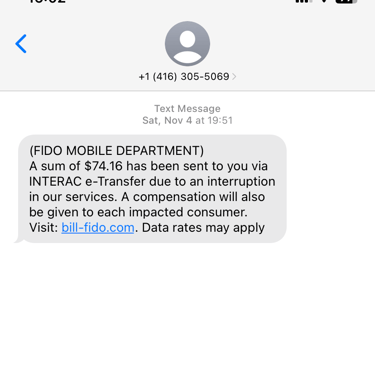Scammers Alert: Beware of Malicious Hyperlinks in Phone Texts
11/19/20232 min read


With the increasing prevalence of technology in our lives, scammers are finding new ways to exploit unsuspecting individuals. One such method is through the use of malicious hyperlinks in phone texts. These scammers often impersonate well-known services, such as Netflix or banks, in an attempt to deceive individuals into revealing their private information.
One common tactic used by scammers is to send text messages claiming that a person's bank account has been compromised or that a subscription fee is about to be charged. They may also send messages regarding the delivery of a parcel, stating that additional arrangements need to be made for it to be delivered correctly.
One of the key warning signs to look out for in these scam texts is the improper-looking hyperlink. Scammers often create deceptive links that appear legitimate at first glance, but upon closer inspection, they are revealed to be fraudulent. For example, they may use a link like "bill-fido.com" instead of the actual Fido billing website, which would be "fido.ca/billing". Similarly, they may use a link like "AuthScotia-loginScotia.com" instead of the official Scotiabank login page, which would be "Scotiabank.ca/login".
It is crucial to exercise caution when receiving such texts and to never open any suspicious links. These links often contain dangerous codes embedded within them, designed to steal personal information. Clicking on these links can result in the loss of sensitive data, such as banking details, passwords, and personal identification information.
To protect yourself from falling victim to these scams, follow these essential tips:
Be skeptical: Always question the authenticity of any text message you receive, especially if it involves sensitive information or requests.
Verify independently: If you receive a text claiming to be from a service provider or bank, independently verify the information by contacting the official customer support channels.
Do not click on suspicious links: Avoid clicking on any links in text messages, especially if they seem unusual or have improper-looking URLs.
Keep your devices updated: Regularly update your phone's operating system and applications to ensure you have the latest security patches.
Use strong, unique passwords: Create strong and unique passwords for each of your online accounts to minimize the risk of unauthorized access.
By staying vigilant and following these precautions, you can protect yourself from falling victim to scams involving malicious hyperlinks in phone texts. Remember, it is always better to be safe than sorry when it comes to safeguarding your personal information.










Get in touch with us for any inquiries or assistance via email / phone during business hours.
2025 Copyright ©️ Metro Pawn Brokers 2000 LTD.
